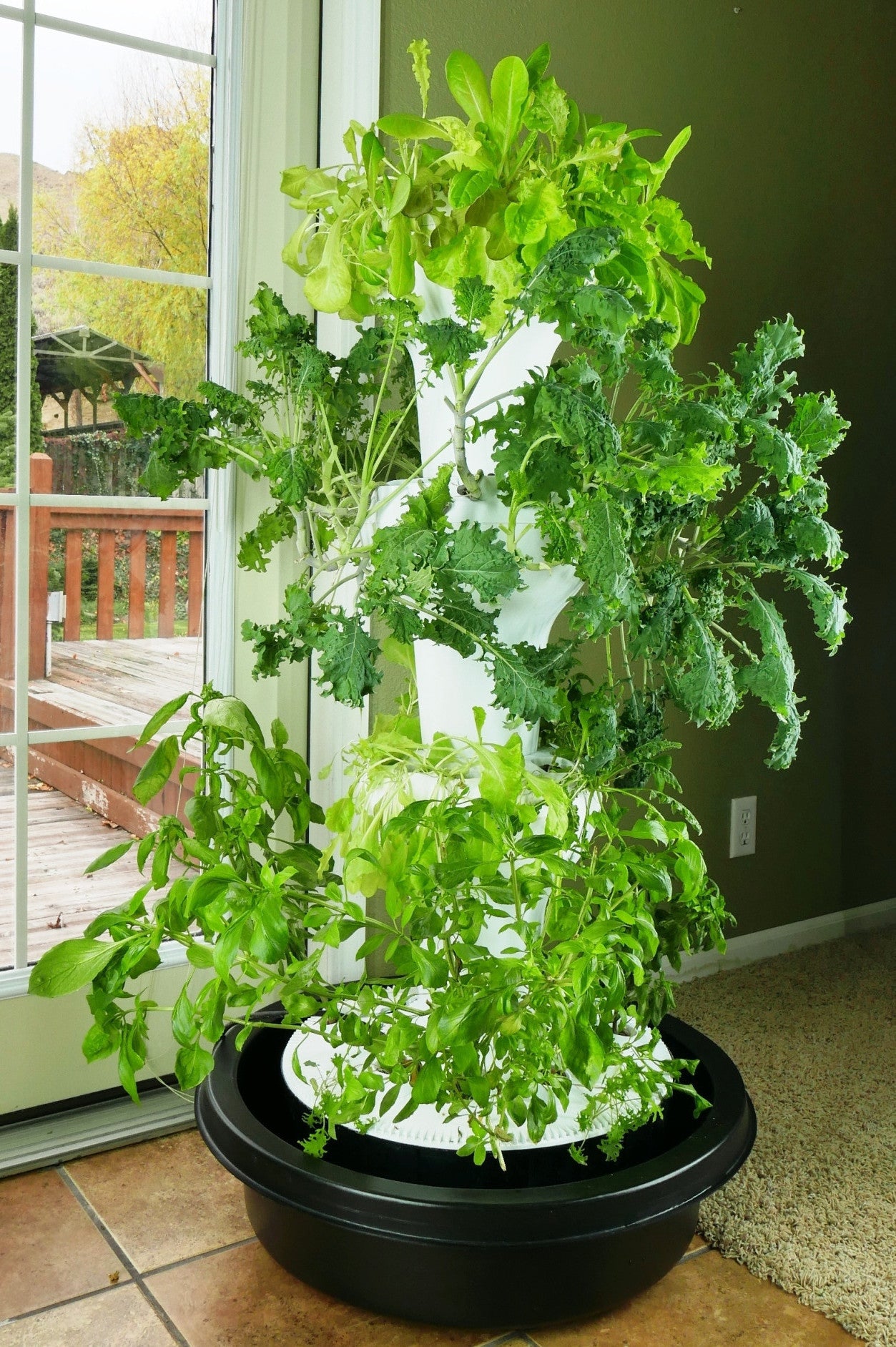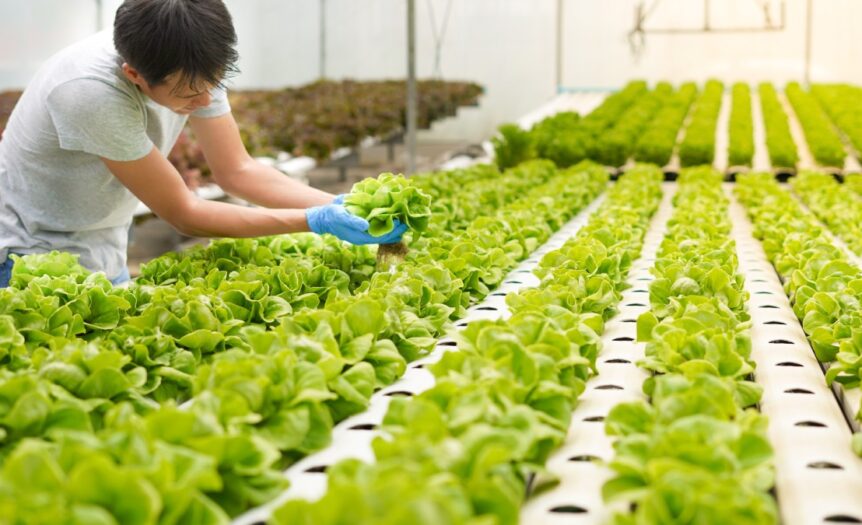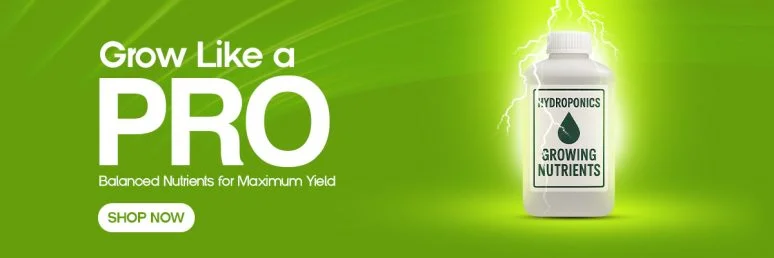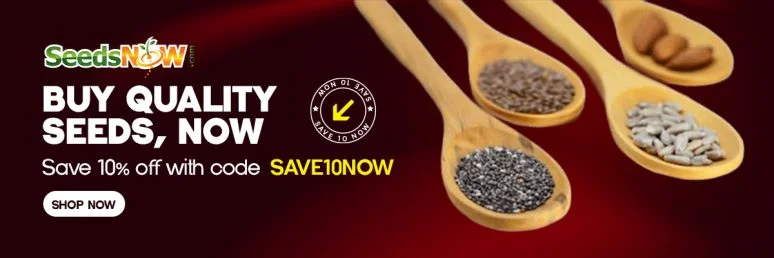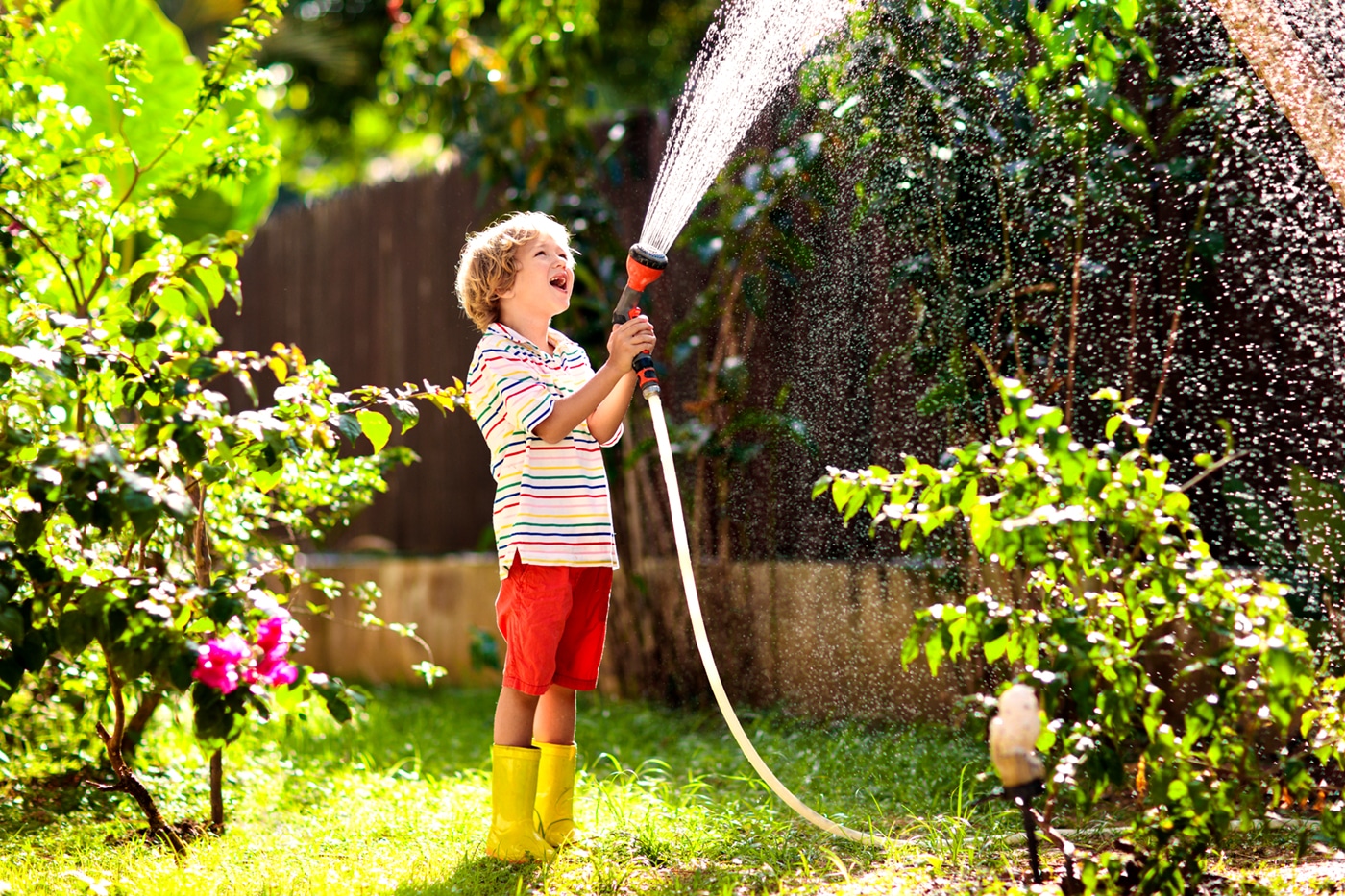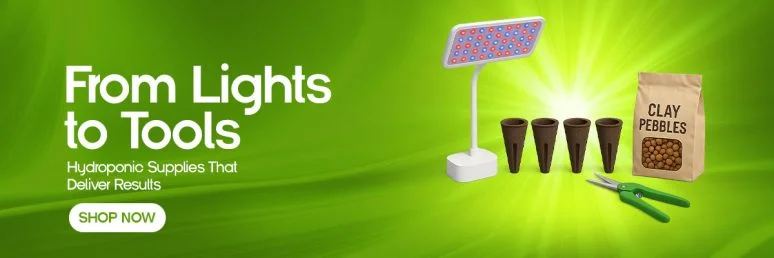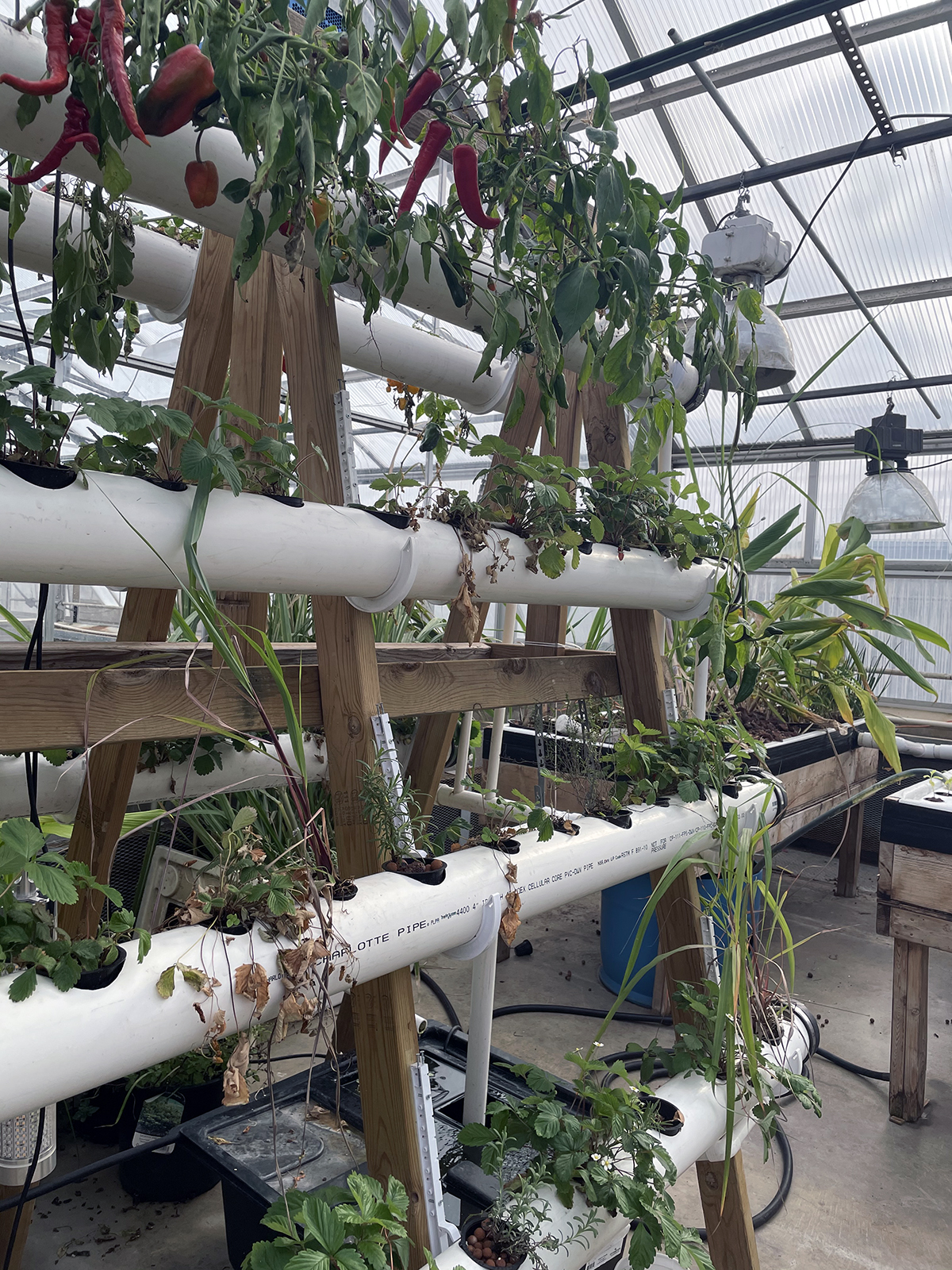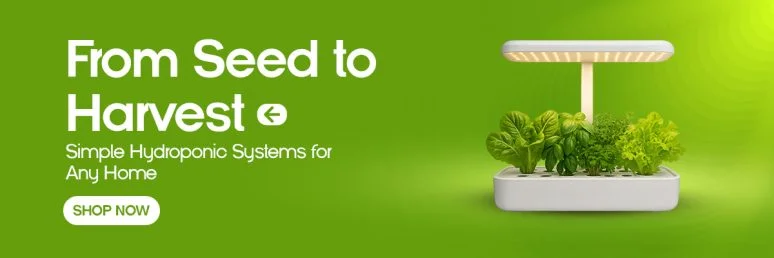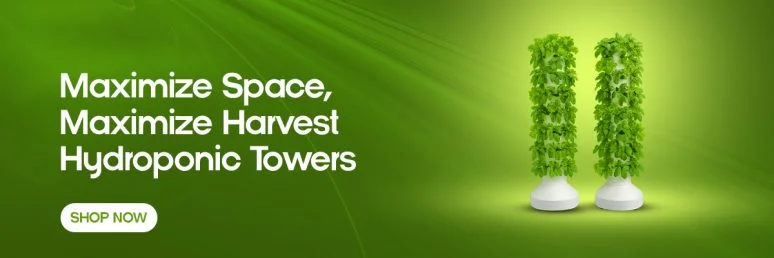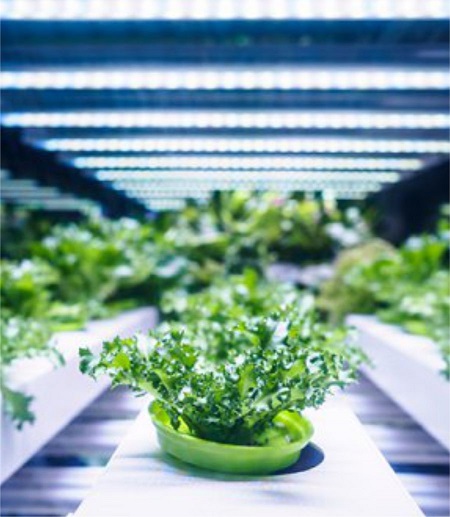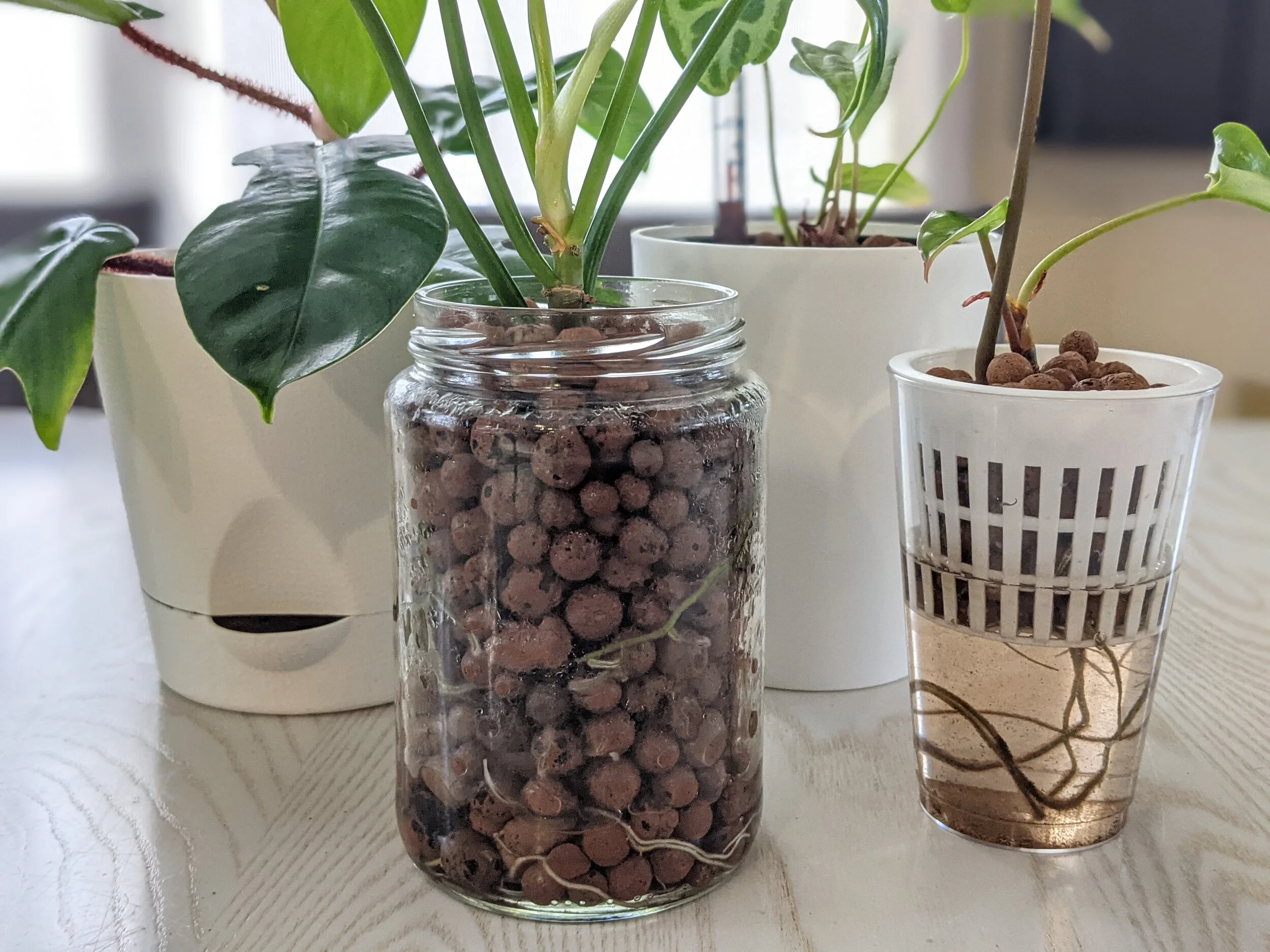What Growing Medium Is Best For Hydroponics? Questions Answered!

Article-at-a-Glance
- Choosing the right growing medium is crucial for hydroponic success, with each option offering specific benefits for plant growth, water retention, and root development.
- Clay pellets (LECA) provide excellent aeration and are reusable, while rockwool offers superior water retention and root support for commercial applications.
- Coconut coir stands out as an eco-friendly alternative with excellent water retention properties and natural resistance to fungal growth.
- The ideal growing medium depends on your specific hydroponic system type, with some systems performing better with specific media combinations.
- Proper preparation of your chosen medium, including pH stabilization and thorough rinsing, can significantly improve plant growth outcomes.
When I first started with hydroponics, I made the mistake many beginners do—assuming any growing medium would work equally well. That single oversight cost me an entire crop of lettuce. The truth about hydroponic growing media is much more nuanced, and choosing the right one can be the difference between thriving plants and disappointing results.
Hydroponic growing media serve as the anchor for your plants’ roots while facilitating the delivery of nutrient solutions and oxygen. Unlike soil, these media don’t provide nutrients themselves—they simply create the optimal environment for roots to absorb what they need from your nutrient solution. Each medium has distinct properties affecting water retention, aeration, pH stability, and reusability that directly impact your plants’ growth.
Why Your Hydroponic Growing Medium Makes or Breaks Your Garden
“Foody 12 Hydroponic System | Foody …” from foodyverticalgarden.com and used with no modifications.
Your growing medium is the foundation of your hydroponic system. It provides structural support for your plants while creating the perfect balance of moisture and oxygen around the root zone. Without soil to act as a buffer, your medium becomes the primary interface between your plants’ roots and their environment.
The ideal growing medium maintains a crucial air-to-water ratio that prevents root drowning while ensuring consistent nutrient delivery. Too much water retention can lead to root rot and oxygen deprivation, while too little means your plants may dry out between feeding cycles. This balance varies by plant type and system design, making your media choice a critical decision.
Growing media also affect pH stability in your system. Some options like coconut coir can buffer pH fluctuations, while others like rockwool may require pre-conditioning to neutralize their naturally high pH. In commercial operations, media consistency becomes even more crucial—any variation can lead to uneven growth across crops, affecting yield and harvest timing.
7 Best Hydroponic Growing Media Compared
“Growers Prefer Hydroponic Farming …” from thefloridavillager.com and used with no modifications.
After testing dozens of growing media across various systems and plants, I’ve identified the seven options that consistently deliver excellent results. Each has specific advantages that make it ideal for particular applications in hydroponic gardening. For those looking to grow microgreens hydroponically, some media might be more suitable than others.
1. Rockwool: The Commercial Grower’s Favorite
Rockwool dominates commercial hydroponic operations for good reason. Made by spinning molten rock into fine fibers, this medium offers unmatched consistency and reliable water retention. Its structure creates an ideal balance of water and oxygen, holding up to 80% water while maintaining critical air pockets. Commercial growers particularly value rockwool’s sterile nature and uniform performance across large operations. For more insights, learn about how plants get nutrients in hydroponics.
The downside? Rockwool has a naturally high pH (around 7.8) that requires pre-soaking in pH-adjusted water before use. It’s also not biodegradable, creating disposal challenges for environmentally conscious growers. Despite these drawbacks, rockwool’s performance makes it the gold standard for many hydroponic applications, especially in propagation and commercial NFT systems where consistent results are non-negotiable.
2. Expanded Clay Pellets (LECA): Reusable and Reliable
Clay pellets, also known as LECA (Lightweight Expanded Clay Aggregate), represent perhaps the most versatile medium in hydroponics. These round, porous balls are created by heating clay until it expands, creating internal pockets that provide exceptional drainage and aeration. The rounded shape prevents compaction while allowing roots to grow freely between the pellets.
What makes clay pellets particularly valuable is their reusability. Unlike many other media, they can be cleaned, sterilized, and used for multiple growing cycles, making them cost-effective long-term. Their excellent drainage makes them ideal for flood and drain (ebb and flow) systems, Dutch buckets, and as a support layer in deep water culture setups. However, their lower water retention means more frequent irrigation cycles may be necessary for some plants.
3. Coconut Coir: The Eco-Friendly Alternative
Coconut coir has revolutionized sustainable hydroponics as a renewable alternative to peat moss and rockwool. Made from the fibrous husks of coconuts, this medium offers excellent water retention while maintaining good aeration properties. Its natural pH range of 5.5-6.8 is ideal for most plants, requiring minimal adjustment before use.
What truly sets coir apart is its remarkable resistance to fungal growth and decomposition. This natural defense mechanism means less risk of root diseases compared to some other organic media. Coir’s environmental credentials are impressive too—it’s biodegradable, renewable, and repurposes agricultural waste that would otherwise be discarded. Many growers mix coir with perlite to enhance aeration while maintaining its excellent water-holding capacity.
- Retains up to 8-9 times its weight in water
- Naturally resistant to fungal pathogens
- pH neutral (5.5-6.8) requiring minimal adjustment
- Biodegradable and environmentally sustainable
- Can be reused for 2-3 growing cycles with proper treatment
4. Perlite: Lightweight and High-Oxygen Option
Perlite stands out as the aeration champion among hydroponic media. This volcanic glass expands dramatically when heated, creating a lightweight, porous material ideal for root oxygenation. Its brilliant white appearance reflects light back to plants while its irregular shape creates numerous air pockets that prevent compaction and promote healthy root development.
In my experience, perlite works exceptionally well for propagation and rooting cuttings because it forces roots to grow rapidly in search of water. The high oxygen levels around the root zone accelerate development while reducing the risk of root rot. However, perlite’s extremely low water retention means it’s rarely used alone except in continuously irrigated systems. Instead, it’s commonly mixed with more water-retentive media like coconut coir or vermiculite in a ratio of 30-50% to enhance drainage while maintaining adequate moisture.
5. Vermiculite: Superior Water Retention Properties
Vermiculite offers remarkable water retention capabilities that make it valuable for water-sensitive plants and systems with less frequent irrigation cycles. This natural mineral expands dramatically when heated, creating a highly absorbent, sponge-like structure that can hold up to four times its weight in water. Unlike other high-retention media, vermiculite also contains beneficial minerals like magnesium and potassium that can gradually release into your nutrient solution. For a comprehensive guide on selecting the best medium, check out this list of top hydroponic growing mediums.
The downside to vermiculite’s excellent water retention is potentially reduced aeration, especially when used alone. For this reason, it’s typically mixed with perlite or LECA to create a balanced medium that combines water retention with adequate oxygen. In my hydroponic gardens, vermiculite has proven particularly valuable for seed starting and young seedlings that require consistent moisture without waterlogging.
6. Growstones: Made From Recycled Glass
Growstones represent the innovative edge of sustainable hydroponic media. Created from recycled glass bottles, these lightweight aggregates offer excellent drainage and aeration similar to LECA but with enhanced surface area for beneficial microbial colonization. Their irregular shape creates numerous interstitial spaces that maintain ideal oxygen levels while still retaining enough moisture for roots.
What makes Growstones particularly interesting is their combination of high porosity (up to 75%) with a neutral pH that requires minimal conditioning before use. Their environmental credentials are impressive too, diverting glass from landfills into productive agricultural use. I’ve found Growstones especially effective in drip and ebb-and-flow systems where their excellent drainage prevents waterlogging while their moisture retention capabilities reduce irrigation frequency.
7. Oasis Cubes: Perfect for Seed Starting
Oasis cubes have revolutionized commercial propagation with their sterile, uniform structure specifically designed for seed starting and clone development. Made from phenolic foam, these cubes provide ideal water-to-air ratios for young plants while maintaining structural integrity throughout the growing cycle. Unlike rockwool, Oasis cubes come pre-stabilized at a plant-friendly pH, eliminating the need for pre-conditioning. For more information on how plants absorb nutrients, check out our guide on how plants get nutrients in hydroponics.
The primary advantage of Oasis cubes is their exceptional cleanliness and consistency. Every cube provides identical growing conditions, making them ideal for commercial operations requiring predictable germination rates. Their capillary action draws water upward evenly, ensuring consistent moisture without waterlogging. While primarily used for propagation, these cubes can support plants through their entire lifecycle when transferred to larger hydroponic systems, making them particularly valuable for leafy greens and herbs in commercial settings.
How to Choose the Right Medium for Your Hydroponic System
“Hydroponic Greenhouse – How to Improve …” from drygair.com and used with no modifications.
Selecting the optimal growing medium isn’t simply about picking the “best” option—it’s about matching media characteristics to your specific system design, plant needs, and maintenance preferences. After years of experimentation, I’ve developed a systematic approach to medium selection that considers all relevant variables.
Matching Media to System Types
Each hydroponic system has unique irrigation patterns and water dynamics that favor certain media types. Deep Water Culture (DWC) systems, where roots are partially submerged, benefit from media with excellent structural support but lower water retention, like LECA or a perlite/vermiculite mix. The continuous water availability makes high retention unnecessary and potentially problematic. For those interested in learning more about nutrient delivery in these systems, check out how plants get nutrients in hydroponics.
Drip systems, by contrast, deliver intermittent irrigation, making water retention more important. Coconut coir, rockwool, or mixed media with good moisture-holding capabilities excel here, ensuring roots don’t dry out between irrigation cycles. For Nutrient Film Technique (NFT) systems, where a thin film of nutrient solution constantly flows past roots, propagation media like rockwool cubes or Oasis plugs typically provide sufficient support without additional media once plants are established.
Ebb and flow (flood and drain) systems create cyclical wet-dry patterns that favor media with balanced water retention and drainage. LECA, Growstones, or perlite/coir mixes at a 50/50 ratio have consistently performed well in these systems in my experience. The key is selecting media that drains efficiently when the flood cycle ends while retaining enough moisture to sustain plants until the next cycle.
Plant-Specific Requirements
Different plants have distinct preferences for root zone conditions that should guide your media selection. Leafy greens and herbs generally thrive with higher moisture levels that media like coconut coir or vermiculite-heavy mixes provide. Their relatively shallow root systems and rapid growth benefit from consistent moisture availability without waterlogging.
Fruiting plants like tomatoes and peppers, with their deeper root systems and longer growth cycles, often perform better with increased aeration and structural support. LECA, perlite-heavy mixes, or Growstones provide the oxygen-rich environment these plants need while still offering adequate moisture. Root vegetables present unique challenges, requiring media that allows expansion while providing structural support—perlite/vermiculite mixes or LECA in deep containers typically yield the best results.
Budget Considerations
Growing media vary significantly in both initial cost and long-term value. While LECA and Growstones represent higher upfront investments, their reusability across multiple growing cycles often makes them more economical over time compared to single-use media like rockwool. For commercial operations, the consistency and reliability of rockwool or Oasis cubes may justify their higher cost through improved crop uniformity and predictable harvests.
Water Retention vs. Aeration: Finding the Perfect Balance
“4 Tips To Help Water Your Plants Wisely …” from westlakehardware.com and used with no modifications.
The secret to hydroponic success lies in the delicate balance between water retention and aeration in your growing medium. This balance directly affects how efficiently your plants can access water, nutrients, and oxygen at the root zone. Too much water retention leads to oxygen deprivation and root rot, while too little means your plants struggle to access consistent moisture and nutrients.
Most hydroponic plants thrive when their root zone maintains approximately 30-40% air capacity alongside moisture availability. This ratio allows for efficient nutrient uptake while preventing the anaerobic conditions that lead to root disease. The challenge is that this ideal ratio shifts throughout a plant’s growth cycle, with younger plants typically benefiting from higher moisture retention and mature plants requiring increased aeration.
Why Air-to-Water Ratio Matters
The air-to-water ratio in your growing medium directly impacts cellular respiration in your plants’ roots. Roots consume oxygen to convert carbohydrates into energy that powers nutrient uptake and plant growth. Without sufficient oxygen, this process slows dramatically, reducing nutrient absorption efficiency and overall plant vigor. Learn more about how plants get nutrients in hydroponics to ensure optimal growth conditions.
Water in your growing medium delivers essential nutrients, but paradoxically, excessive water displaces oxygen and can create anaerobic zones where harmful bacteria thrive. These bacteria can attack root tissue, causing rot that quickly spreads throughout the root system. The ideal medium creates numerous microscopic air pockets that remain oxygen-filled even when the medium is adequately moistened.
Different plant species have evolved with varying preferences for root zone moisture levels. Cacti and succulents prefer more aeration and less moisture, while water-loving plants like lettuce thrive with higher moisture levels. Understanding your specific plants’ needs allows you to select media with appropriate water retention characteristics or create custom blends that provide optimal conditions.
Signs Your Medium Has Poor Aeration
Recognizing the symptoms of inadequate aeration can help you address problems before they become severe. The earliest warning sign is typically slowed growth, as oxygen-deprived roots struggle to support normal development. Leaves may appear smaller than usual, and internodal spacing often decreases as the plant conserves resources.
As aeration problems persist, you’ll notice yellowing lower leaves as the plant reallocates resources from older growth to new development. Root examination reveals the most definitive evidence—healthy roots appear white or light-colored with numerous fine hairs, while oxygen-deprived roots develop brown discoloration and a slimy texture. The distinct smell of hydrogen sulfide (similar to rotten eggs) indicates anaerobic conditions have developed in your medium.
Plants suffering from poor aeration often display symptoms similar to nutrient deficiencies, leading growers to mistakenly increase fertilizer concentrations. This response actually compounds the problem, as increased salts in the root zone create additional osmotic stress on already compromised roots. Before adjusting your nutrient solution, always check your medium’s moisture level and aeration status.
How to Fix Waterlogged Media
If you’ve identified poor aeration in your system, immediate intervention can often save affected plants. For media like coco coir or rockwool that have become waterlogged, temporarily reducing irrigation frequency and duration allows excess moisture to dissipate. In extreme cases, gently removing plants and blotting media with absorbent material can accelerate drying. For more insights on maintaining optimal conditions, learn how to control humidity in your grow tent.
For longer-term solutions, consider adding aeration amendments to your current medium. Mixing in perlite, LECA, or pumice at approximately 20-30% of volume significantly increases air porosity without completely changing your setup. In recirculating systems, increasing dissolved oxygen through air stones or venturi injectors helps compensate for limited root zone aeration. For more information on hydroponic growing mediums, check out this guide on top hydroponic growing mediums.
Prevention remains the best approach to aeration problems. Starting with appropriately mixed media and calibrating irrigation timing to allow partial drying between cycles maintains optimal air-to-water ratios. Monitoring the weight of your growing containers provides a simple way to track moisture levels—significantly lighter weight indicates it’s time to irrigate again.
Setting Up Your Hydroponic Medium Correctly
“Small-scale hydroponics | UMN Extension” from extension.umn.edu and used with no modifications.
Proper preparation of your growing medium before introducing plants can prevent many common problems and establish optimal growing conditions from the start. Each medium requires specific preparation steps to neutralize pH, remove dust or debris, and create ideal physical structure.
Preparation Steps for Different Media Types
Rockwool requires thorough pre-conditioning to neutralize its naturally high pH. Soak cubes or slabs in pH-adjusted water (5.5-6.0) for at least 24 hours, allowing the material to fully saturate and stabilize. This preparation prevents the pH shock that can occur when rockwool’s alkaline properties affect your nutrient solution. Some growers perform multiple rinses with increasingly acidic water to ensure complete neutralization.
Coconut coir often contains naturally occurring salts that can harm sensitive plants if not properly leached. Rinse thoroughly with fresh water until runoff tests with an EC meter show minimal dissolved solids (ideally below 0.5 mS/cm). Commercial coir products vary widely in salt content, with premium horticultural grades requiring less rinsing than industrial byproduct coir.
LECA and other reusable media need thorough cleaning between uses to remove old root material, algae, and mineral buildup. Soaking in a dilute hydrogen peroxide solution (3%) for 24 hours effectively sterilizes these media without leaving harmful residues. After treatment, rinse thoroughly and allow complete drying before reuse to prevent introducing pathogens to your new crop. For more information on maintaining healthy plants, explore how to keep hydroponic plants alive.
Container Selection and Sizing
Your container choice significantly impacts how your growing medium performs. Containers should provide adequate volume for root development while facilitating proper drainage. For most medium-sized plants like peppers or herbs, containers holding 1-2 gallons of medium provide sufficient space for healthy root development without wasting resources. For more information on selecting the best medium, check out this guide on top hydroponic growing mediums.
Container material affects both heat retention and root zone temperatures. Dark-colored plastic containers can absorb heat, potentially raising root temperatures beyond optimal ranges in warm environments. Light-colored or insulated containers help maintain stable temperatures, particularly important for heat-sensitive crops like lettuce and spinach.
Drainage considerations vary by medium type and system design. Media with excellent drainage like LECA require containers with ample drainage holes or net pots that allow excess solution to flow freely. High-retention media like coir benefit from elevated containers that prevent waterlogging at the container bottom. Regardless of medium choice, containers should never sit directly in standing water unless specifically designed for wicking systems.
Proper Placement in Your System
Strategic placement of growing media within your system optimizes plant performance while minimizing resource use. In mixed-media approaches, layer more drainage-focused materials at the bottom (LECA, coarse perlite) with water-retentive options toward the top (coir, fine vermiculite). This stratification creates a moisture gradient that promotes downward root growth while preventing waterlogging.
For systems with multiple containers, consider elevation differences that might affect water distribution. Containers positioned lower in gravity-fed systems receive more water and may require more drainage-focused media. Higher positions typically experience faster drying and benefit from increased water retention. These subtle adjustments allow you to create optimal conditions throughout your system despite position differences. For more insights, learn about how to keep hydroponic plants alive.
Plant spacing impacts medium performance as plants mature. Closely spaced plants create canopy coverage that reduces evaporation from the medium surface, potentially increasing moisture retention. Adequate spacing allows air circulation that helps maintain proper moisture levels and reduces humidity that could promote fungal growth. Adjusting irrigation timing based on plant density helps maintain optimal moisture levels as your garden develops.
Common Growing Medium Mistakes and How to Avoid Them
“Hydroponics | National Agricultural Library” from www.nal.usda.gov and used with no modifications.
Even experienced hydroponic growers occasionally make critical errors with growing media. Understanding these common pitfalls helps you avoid performance-limiting mistakes and maintain optimal growing conditions throughout your crop cycle. For more insights, check out this guide on top hydroponic growing mediums.
Over-Watering Issues
Over-watering remains the most common medium-related mistake in hydroponics, particularly among beginners. The misconception that “more water equals more growth” leads to frequent irrigation that prevents necessary oxygen replenishment in the root zone. This error is especially problematic with high-retention media like coco coir and rockwool that already excel at holding moisture.
The solution is implementing a strategic dry-back period between irrigation cycles. Most plants benefit when their medium dries to about 50-60% of its maximum water content before the next irrigation. This cycle creates air exchange in the root zone while preventing drought stress. Using moisture meters or the simple “finger test” (medium should feel slightly damp, not wet) helps determine appropriate irrigation timing.
Automation systems often contribute to over-watering when not properly calibrated for medium type and plant stage. Program shorter, less frequent irrigation cycles for high-retention media and increase frequency (not duration) as plants mature and consume more water. Remember that environmental conditions significantly impact evaporation rates—irrigation that works perfectly in winter may cause waterlogging during humid summer conditions.
pH Imbalances
Growing media can significantly influence nutrient solution pH, affecting nutrient availability and plant health. Rockwool’s naturally high pH requires thorough pre-conditioning, while pine-based media often release acids that lower solution pH. Monitoring and adjusting nutrient solution pH becomes especially critical when using media with known pH effects. For those interested in maintaining optimal conditions, using hydroponics test kits can be beneficial in keeping track of pH levels effectively.
The ideal approach is regular pH testing of both incoming nutrient solution and drainage (runoff) from your containers. A divergence between these readings indicates your medium is altering solution pH. Adjust incoming solution pH to compensate for these effects—for example, if your medium raises pH by 0.5 points, lower your input solution by the same amount to achieve target levels in the root zone.
Media pH effects typically diminish over time as materials stabilize, but this timeline varies significantly by medium type. Coconut coir generally stabilizes within 1-2 weeks, while rockwool can continue influencing pH for a month or longer. Adjusting your pH management strategy throughout the growing cycle accounts for these changing influences. For more information on managing pH levels effectively, consider exploring popular hydroponics test kits that can help monitor and adjust pH levels efficiently.
Mineral Buildup Prevention
All hydroponic media eventually accumulate mineral deposits from nutrient solutions, particularly in environments with high evaporation rates. This buildup concentrates salts that can damage roots through osmotic pressure and nutrient antagonism. Regular monitoring of electrical conductivity (EC) in your medium provides early warning of accumulation before plant damage occurs.
EC Management by Medium Type
Rockwool: Flush when runoff EC exceeds input by 0.5 mS/cm
Coconut Coir: Flush when runoff EC exceeds input by 0.4 mS/cm
LECA/Clay Pellets: Flush when visible white deposits appear
Perlite/Vermiculite: Flush when runoff EC exceeds input by 0.3 mS/cm. For more on maintaining optimal conditions, consider using a grow tent for hydroponics.
Implementing periodic “clearwater” flushes prevents problematic accumulation in any medium type. Apply plain pH-adjusted water at 2-3 times your container volume, allowing complete drainage to carry away dissolved minerals. For high-value crops or sensitive plants, consider using reverse osmosis water for flushing to maximize mineral removal without introducing additional elements.
Some minerals, particularly calcium and magnesium, form insoluble compounds that simple flushing cannot remove. For reusable media like LECA, periodic soaking in dilute acid solutions (citric acid or vinegar at 1 tablespoon per gallon) dissolves these deposits. Always follow acid treatment with thorough rinsing to remove both the acid and dissolved minerals before reintroducing plants. For more information on maintaining optimal conditions, learn how to control humidity in your grow tent.
Mixing Media for Superior Results
“Hydroponics Grow Light – Full Spectrum …” from www.wehydroponics.com and used with no modifications.
After years of experimentation, I’ve found that blended media often outperform single-media approaches by combining the beneficial properties of multiple materials. These custom mixes allow you to precisely engineer growing conditions that match your plants’ needs and system design while mitigating the drawbacks of individual components.
The most successful blends balance water retention with aeration while providing adequate structural support for plants. For example, mixing coconut coir (excellent water retention) with perlite (superior aeration) creates a versatile medium suitable for most hydroponic applications. The coir holds moisture and nutrients while the perlite creates air pockets that prevent compaction and promote root respiration.
Winning Combinations for Different Plants
Leafy greens and herbs thrive in a blend of 70% coconut coir, 20% perlite, and 10% vermiculite—a combination that provides consistent moisture while maintaining adequate aeration for rapid growth. This mix works particularly well in drip systems where the high coir content buffers against irrigation interruptions while the perlite prevents waterlogging during normal operation. For more information on choosing the right growing medium, check out this guide on top hydroponic growing mediums.
Ratio Guidelines for Mixed Media
The optimal ratio for mixed media depends on your specific plants and system design, but following general guidelines helps create effective blends. For most applications, start with 60-70% base medium (typically coconut coir or rockwool) and add 30-40% aeration amendment (perlite, pumice, or LECA). Adjust this ratio based on irrigation frequency—systems with less frequent watering benefit from higher percentages of water-retentive components, while frequently irrigated systems require more aeration amendments.
The Perfect Medium Depends on Your Unique Setup
“Semi-Hydroponics …” from www.lecaaddict.com and used with no modifications.
After exploring the characteristics and applications of various hydroponic media, it’s clear that no single option qualifies as universally “best” for all situations. The ideal medium for your garden depends on your specific combination of plants, system design, environmental conditions, and personal preferences. Commercial lettuce producers might find rockwool ideal for its consistency and sterility, while home growers focused on sustainability might prefer coconut coir or LECA for their renewable or reusable properties.
Frequently Asked Questions
Through years of teaching hydroponic workshops and consulting with growers, I’ve encountered consistent questions about growing media. These answers address the most common concerns while providing practical guidance for both beginners and experienced hydroponic gardeners.
How often should I replace my hydroponic growing medium?
Replacement frequency varies significantly by medium type and growing conditions. Single-use media like rockwool and oasis cubes are typically replaced with each crop cycle, particularly in commercial operations where sterility is critical. Their structure begins degrading after 3-6 months of continuous use, and the risk of pathogen accumulation increases with extended use even when sterilization is attempted.
Reusable media like LECA and Growstones can last through multiple growing cycles with proper maintenance. After harvesting, remove old root material, soak in hydrogen peroxide solution (3%) for 24 hours, rinse thoroughly, and allow complete drying before reuse. With this treatment, these media typically remain effective for 2-3 years before physical breakdown affects their performance. Even then, they can often be recycled as drainage material in conventional container gardening.
Can I reuse my growing medium for multiple crops?
Coconut coir, LECA, perlite, and Growstones can all be effectively reused with proper treatment between cycles. The sterilization process varies by medium—coir benefits from pasteurization (heating to 160°F for 30 minutes), while hard materials like LECA can be boiled or soaked in sterilizing solutions. Always consider the economic value of your crop when deciding whether to reuse media—high-value or disease-sensitive crops often justify the cost of fresh media to eliminate pathogen risks.
Which growing medium is best for beginners?
Coconut coir mixed with perlite (70/30 ratio) offers beginners the most forgiving introduction to hydroponics. This combination provides excellent water retention that buffers against irrigation mistakes while maintaining sufficient aeration to prevent root problems. Coir’s natural pH buffering also helps stabilize nutrient solutions, reducing the frequency of necessary adjustments. For beginners interested in reusable media, LECA offers straightforward maintenance and visual moisture monitoring that simplifies irrigation decisions.
Do different plants need different growing media?
Plant species have evolved with varying preferences for root zone conditions that influence ideal media selection. Fruiting plants like tomatoes and peppers typically perform better with increased aeration and structural support from media like LECA or perlite-heavy mixes. Their extensive root systems and longer growth cycles benefit from media stability and oxygen availability that supports continuous production.
Leafy greens and herbs generally prefer higher moisture levels provided by coconut coir or vermiculite-rich blends. Their relatively shallow root systems and rapid growth cycles prioritize consistent nutrient availability over extreme aeration. These preferences become even more pronounced in systems with intermittent irrigation, where media water retention significantly impacts plant performance between watering cycles.
Root vegetables present unique challenges, requiring media that allows physical expansion while maintaining structural integrity. Perlite/vermiculite blends in deeper containers typically yield the best results, providing the loose structure needed for proper development while maintaining adequate moisture. The ideal ratio shifts toward increased perlite (60/40) to prevent compaction as roots expand and displace the medium.
How do I prevent algae growth in my hydroponic medium?
Algae growth occurs when growing media receive both light and moisture—conditions unfortunately common in hydroponic systems. The most effective prevention strategy is blocking light from reaching moist media surfaces. Using opaque container tops, applying light-blocking covers (like black plastic), or adding a dry mulch layer of perlite effectively prevents algae establishment without affecting plant growth. For more tips on maintaining healthy systems, check out how to keep hydroponic plants alive.
Irrigation management also significantly impacts algae development. Allowing the medium surface to dry between watering cycles creates inhospitable conditions for algae while maintaining adequate moisture at root depth. Drip irrigation that delivers solution directly to the root zone rather than the medium surface similarly reduces algae-friendly conditions.
For existing algae problems, hydrogen peroxide solution (1.5-3% applied as a drench) quickly eliminates growth without harming established plants. This treatment breaks down into water and oxygen, leaving no harmful residues while temporarily boosting root zone oxygen levels. Regular application every 7-10 days prevents recurrence while maintaining optimal growing conditions.
GrowAce provides comprehensive hydroponic systems designed to work with a variety of growing media, helping you achieve optimal results regardless of which medium you choose. Their specialized equipment is engineered to deliver precise irrigation and nutrient delivery that maximizes the benefits of your selected growing medium. For those interested in optimizing their setup, consider exploring why using a grow tent for hydroponics can further enhance your hydroponic gardening experience.
